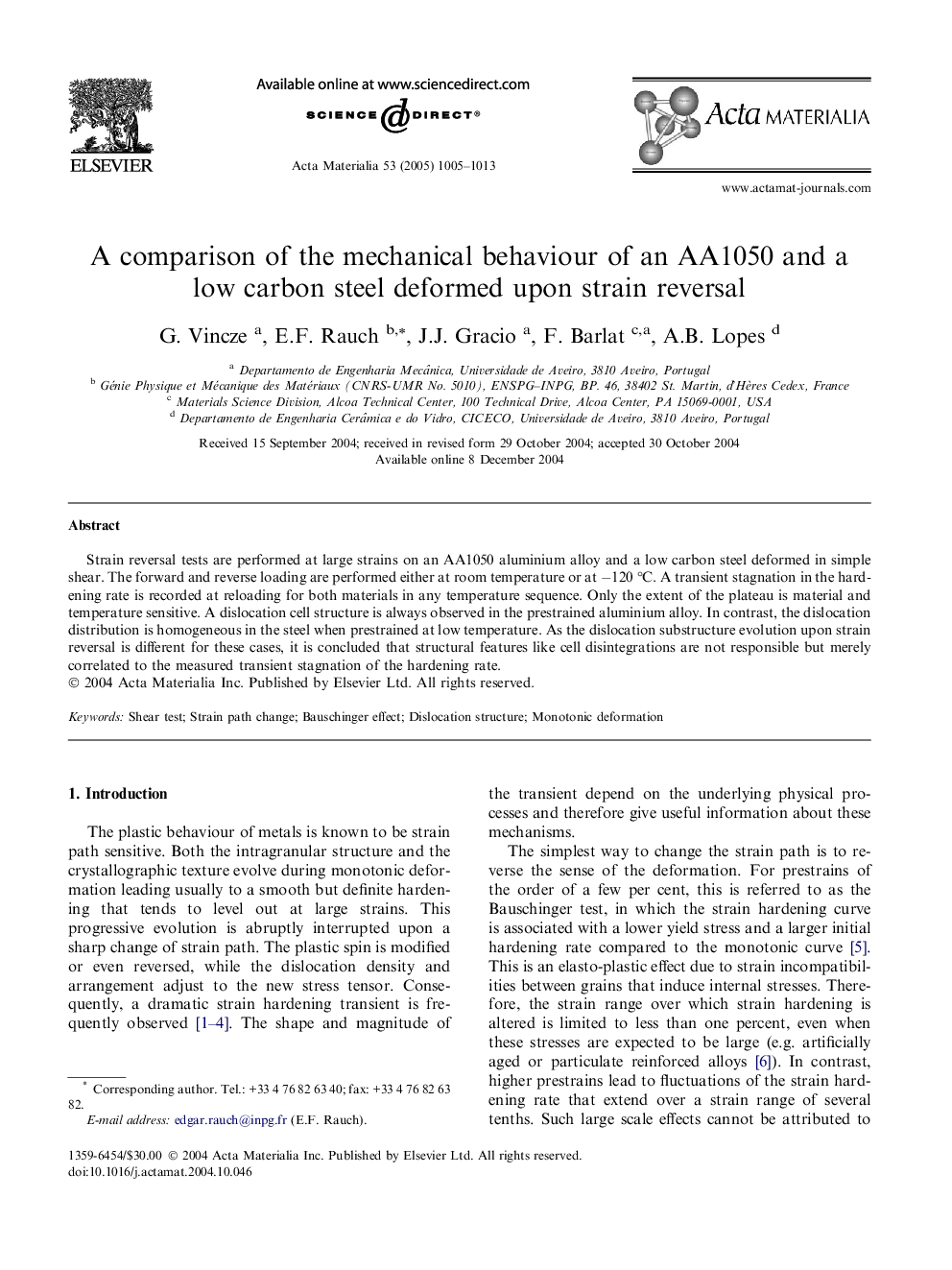| Article ID | Journal | Published Year | Pages | File Type |
|---|---|---|---|---|
| 10621143 | Acta Materialia | 2005 | 9 Pages |
Abstract
Strain reversal tests are performed at large strains on an AA1050 aluminium alloy and a low carbon steel deformed in simple shear. The forward and reverse loading are performed either at room temperature or at â120 °C. A transient stagnation in the hardening rate is recorded at reloading for both materials in any temperature sequence. Only the extent of the plateau is material and temperature sensitive. A dislocation cell structure is always observed in the prestrained aluminium alloy. In contrast, the dislocation distribution is homogeneous in the steel when prestrained at low temperature. As the dislocation substructure evolution upon strain reversal is different for these cases, it is concluded that structural features like cell disintegrations are not responsible but merely correlated to the measured transient stagnation of the hardening rate.
Related Topics
Physical Sciences and Engineering
Materials Science
Ceramics and Composites
Authors
G. Vincze, E.F. Rauch, J.J. Gracio, F. Barlat, A.B. Lopes,
